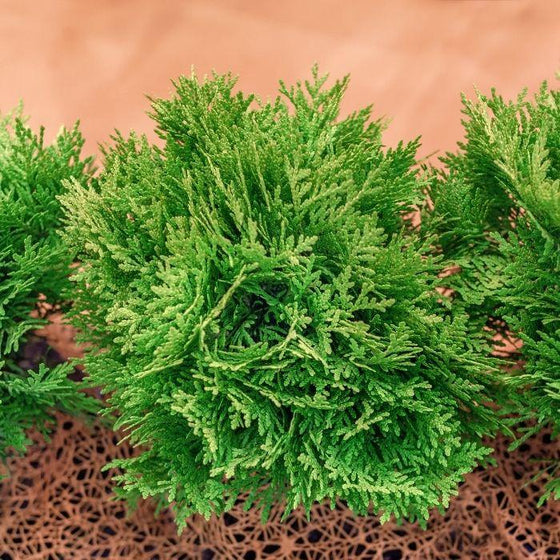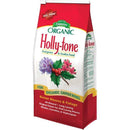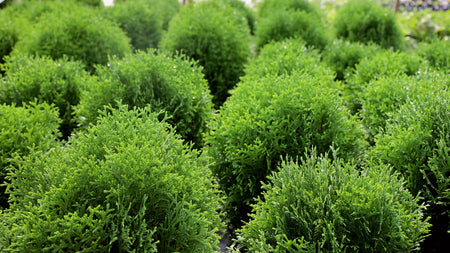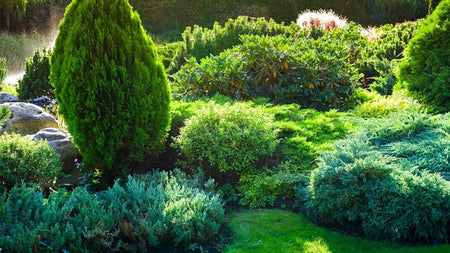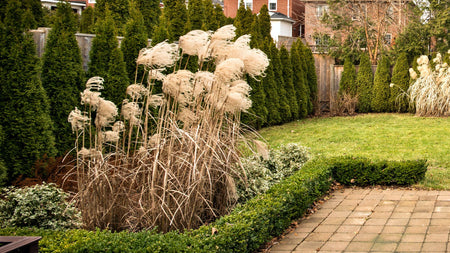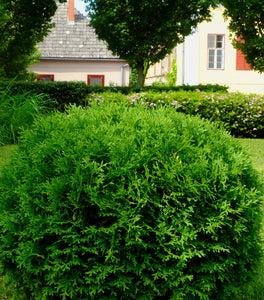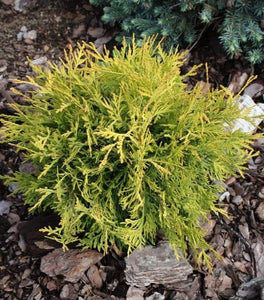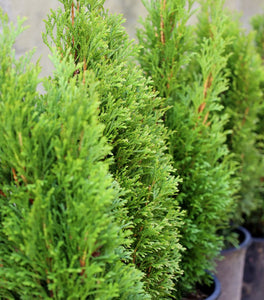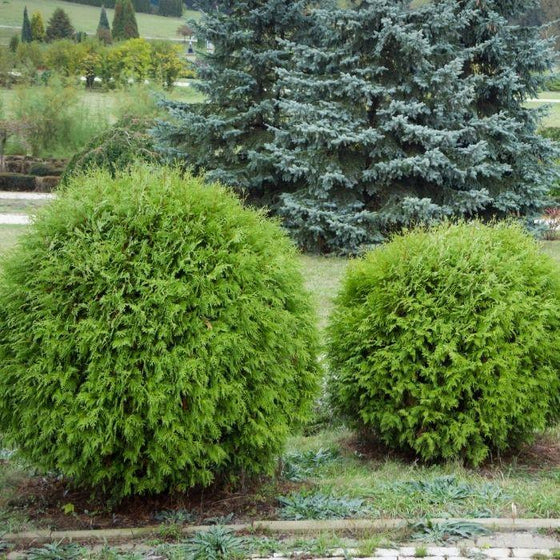
Images Depict Mature Plants
Danica Globe Arborvitae
Danica Globe Arborvitae (Thuja occidentalis 'Danica') is a compact, dwarf evergreen shrub prized for its perfectly rounded shape and dense, finely textured foliage. This low-maintenance cultivar of Eastern arborvitae forms a naturally symmetrical globe, reaching only 1 to 2 feet tall and wide, making it an excellent choice for small-space gardens, container plantings, and formal landscape designs. Its bright green foliage remains vibrant year-round, taking on subtle bronze tones in winter for added seasonal interest.
Perfect for edging pathways, framing foundation beds, or accenting mixed borders, Danica Arborvitae thrives in full sun to partial shade and prefers moist, well-drained soil. Its compact form requires minimal pruning, retaining its globe shape with little effort. Resistant to many common pests and tolerant of urban pollution, this shrub is ideal for gardeners seeking a neat, structured look in both residential and commercial landscapes. Use Danica as a single specimen or mass it for a lush, evergreen border that adds year-round texture and color.
Hardy in USDA Zones 3–8, Danica Globe Arborvitae is a durable, cold-hardy evergreen that performs well in a wide range of climates. It pairs beautifully with flowering perennials, low-growing grasses, or other dwarf conifers in formal gardens, rock gardens, and patio containers. With its slow growth rate, tidy habit, and enduring color, Danica offers year-round beauty with minimal maintenance, making it a standout addition to any landscape design.
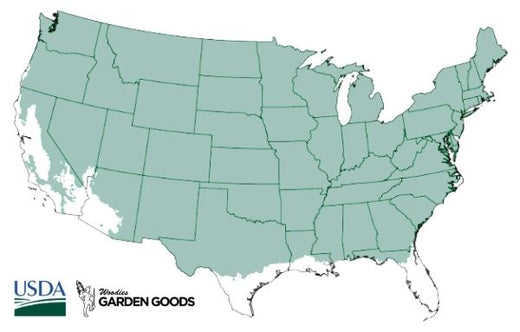
| Hardiness Zone: | 3-8 |
|---|---|
| Mature Height: | 2 to 2.5 Feet |
| Mature Width: | 2 to 2.5 Feet |
| Classification: | evergreen shrub |
| Sunlight: | Full Sun |
| Habit: | Densely branched, Round |
| Foliage: | Green |
| Flower Color: | None |
| Pruning Season: | Rarely Needed |
| Soil Condition: | Any well drained soil |
| Water Requirements: | Water well until established |
| Uses: | Extremely attractive when used as in the mixed border, foundations, or planted in mass |
How to Care for Danica Globe Arborvitae
Be sure to read our planting instructions to ensure a healthy and happy Danica Globe Arborvitae for years to come!
How do I Plant a Danica Globe Arborvitae Shrub?
Planting a Danica Globe Arborvitae shrub begins with choosing the right location. This compact evergreen thrives in full sun to partial shade and prefers well-drained, loamy soil. Start by digging a hole that is twice as wide and as deep as the root ball. Gently loosen the roots if they are compacted, then place the shrub so the top of the root ball is level with the surrounding soil. Backfill with native soil, pressing down firmly to remove air pockets, and water deeply to help settle the roots. To ensure optimal health and growth, space Danica Globe Arborvitae at least 2 to 3 feet apart if planting in groups or borders. Apply a 2–3 inch layer of mulch around the base of the plant to conserve moisture, suppress weeds, and regulate soil temperature. Avoid piling mulch directly against the stem to prevent rot. This shrub’s slow growth rate and naturally rounded form make it a low-maintenance choice for foundation beds, walkways, and container gardens, where tidy structure and evergreen color are key landscape features.
How do I Water a Danica Globe Arborvitae Shrub?
Proper watering is essential for establishing and maintaining a healthy Danica Globe Arborvitae shrub, especially during the first growing season. Water deeply 2–3 times per week after planting to keep the root zone consistently moist, but not soggy. Focus on soaking the soil around the base rather than overhead watering, which can promote fungal issues. As the shrub becomes established, usually after the first full season, you can reduce watering to once per week, depending on rainfall and temperature. Well-drained soil is key—avoid planting in areas where water tends to pool, as arborvitaes dislike standing water. During hot summer months or prolonged dry spells, monitor soil moisture more closely and increase the frequency of watering as needed. Applying a 2–3 inch layer of mulch around the base of the Danica Globe Arborvitae will help retain soil moisture and reduce water evaporation. Container-grown plants may require more frequent watering, especially in full sun. Keeping the root zone evenly moist—never completely dry or saturated—will ensure your arborvitae remains lush, green, and healthy year-round, maintaining its signature compact, rounded form and evergreen color in the landscape.
How do I fertilize a Danica Globe Arborvitae Shrub?
Fertilizing your Danica Globe Arborvitae shrub ensures strong, healthy growth and vibrant evergreen foliage throughout the year. Apply a balanced, slow-release fertilizer—such as 10-10-10 or a specialized evergreen formula—in early spring as new growth begins. Spread the fertilizer evenly around the base of the plant, keeping it a few inches away from the trunk, and water it in thoroughly to help nutrients reach the root zone. For best results, perform a soil test beforehand to determine any nutrient deficiencies and choose the appropriate fertilizer blend. Avoid over-fertilizing, as excessive nitrogen can lead to overly rapid growth that compromises the plant’s compact shape. If desired, a light second application in mid-summer can support additional growth, especially in poor or sandy soils. Organic options like compost or well-aged manure can also be worked into the soil around the root zone to improve overall soil health. With the right feeding routine, your Danica Globe Arborvitae will maintain its neat, rounded form, dense texture, and year-round green color, making it a standout in foundation plantings, low hedges, and container gardens.

How and When should I Prune Danica Globe Arborvitae Shrubs?
Danica Globe Arborvitae shrubs have a naturally dense and rounded shape, making them a low-maintenance choice that requires minimal pruning. However, to maintain their tidy appearance and encourage healthy growth, light pruning can be done in early spring or late fall, before or after the active growing season. Use clean, sharp pruning shears to remove any dead, damaged, or crossing branches, which helps improve airflow and light penetration. Avoid cutting into the old wood, as arborvitae does not regenerate from bare stems and doing so may create permanent gaps in the foliage. To refine the shrub’s shape, you can perform a light shearing once a year to enhance its globe-like form and stimulate fresh, dense growth. This is particularly useful if you’re using Danica Arborvitae in formal gardens, foundation plantings, or low hedges, where uniformity is key. Always step back and check the symmetry as you prune to ensure a balanced look. With gentle, timely pruning, your Danica Globe Arborvitae will retain its compact form, vibrant green foliage, and architectural appeal throughout the year, making it a standout in any landscape design.


